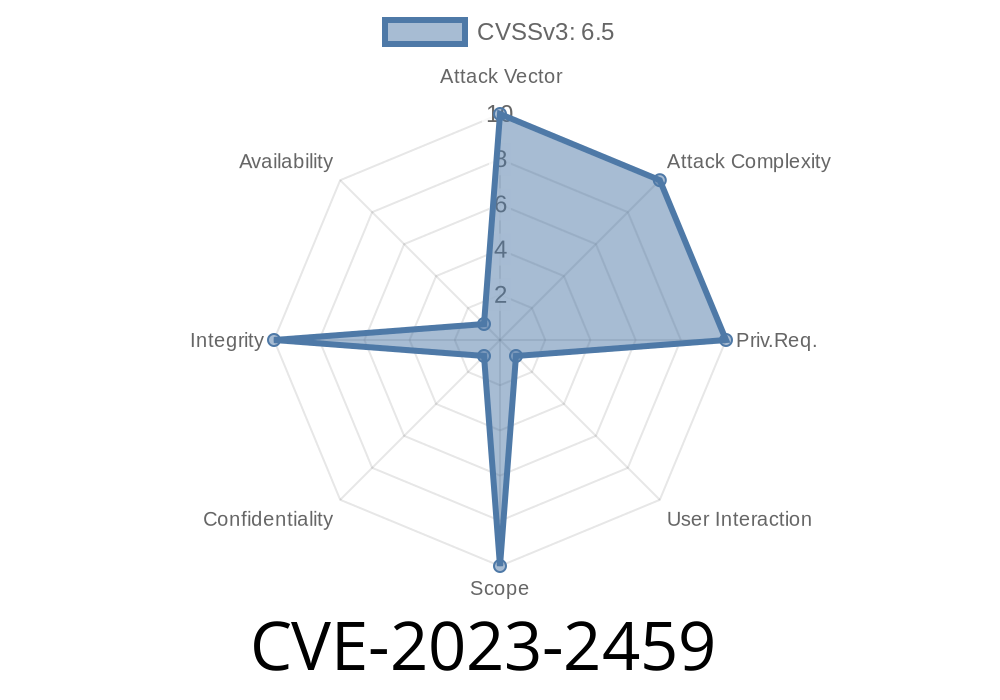In April 2023, security researchers discovered and reported a significant issue in Google Chrome, officially tracked as CVE-2023-2459. This bug affected Chrome browsers prior to version 113..5672.63 and allowed attackers to get around certain permission restrictions using a specially crafted web page. If you’ve ever clicked “Allow” or “Block” on a browser prompt, you’ll want to know how this worked and what could have happened.
What’s the Deal with Browser Prompts?
Modern browsers like Chrome use permission prompts all the time—for example, when a site wants to access your camera, location, or show notifications. These prompts are important guardrails; they make sure users know what’s happening.
CVE-2023-2459 was about a weakness in how Chrome managed those prompts. Instead of fully protecting users, there was a way for attackers to trick the browser into bypassing the normal rules by using a specially crafted HTML page.
What Exactly Was the Problem?
If a malicious site could open a permission dialog at just the right time and in a certain way, Chrome wasn't enforcing all the checks it should. That let attackers ask for permissions surreptitiously or in contexts where Chrome should’ve blocked them.
This issue was categorized as a “Medium” severity flaw by Google. While it wasn’t a complete disaster (like allowing full remote code execution), it could have led to privacy issues, such as rogue websites accessing your device’s camera, microphone, or location—even if you hadn’t clearly agreed.
A Simplified Explanation (With Code)
Let’s look at a simplified example. Chrome has APIs like navigator.geolocation.getCurrentPosition() to ask for location. Normally, Chrome will show a permission prompt before the site gets the info. With this bug, a malicious page could leverage frames, popups, or timing tricks to get the prompt to appear in ways Chrome shouldn’t allow.
Here's a rough example of a crafted HTML page that could be used for such an attack
<!-- malicious.html -->
<html>
<body>
<iframe id="trickframe" src="about:blank"></iframe>
<script>
// Step 1: Load the target in an iframe
let frame = document.getElementById('trickframe');
frame.src = 'https://victim-site.com/';;
// Step 2: Wait for the frame to load
frame.onload = function() {
// Step 3: Exploit the race condition via script
frame.contentWindow.navigator.geolocation.getCurrentPosition(function(pos) {
console.log('Got location:', pos);
});
};
</script>
</body>
</html>
Note: This is a demonstration. Attackers could refine such code to operate more stealthily, perhaps using window.open, event listeners, or timing attacks to disguise their actions.
Open an iframe pointing at a victim or neutral target site.
3. Trigger a browser prompt via JavaScript, optionally using cross-window communication or timing tricks.
4. Bypass Chrome’s cross-origin or user-gesture restrictions, causing the permission prompt to appear in cases where it shouldn’t.
This might let an attacker, for example, trick you into granting access to your location or notifications—even if you didn’t click anything that should allow it.
Who Found and Fixed It?
According to the Chromium release notes and the Chrome Security page, this bug was responsibly reported and promptly fixed by the Chrome team.
Google patched the issue in Chrome version 113..5672.63. If you’re running anything older, you should update right away.
> Official Resolution:
> _“Inappropriate implementation in Prompts in Google Chrome prior to 113..5672.63 allowed a remote attacker to bypass permission restrictions via a crafted HTML page.”_
References:
- Chromium Release Blog, May 2023
- Chromium Bug 142123 (limited access)
- CVE-2023-2459 at NVD
How Can You Stay Safe?
Users:
Make sure you’re running Chrome 113 or later.
- Don’t trust strange websites—especially those that ask for unusual permissions right after opening.
If a site unexpectedly asks for sensitive permissions, it’s okay to say “Block.”
Developers:
Conclusion
CVE-2023-2459 was a sharp reminder that even widely trusted software can have bugs in features as fundamental as permission prompts. Through careful exploitation, attackers could ask for permissions when Chrome should have stopped them. Thankfully, the Chrome team responded quickly, and users who update are no longer at risk.
Timeline
Published on: 05/03/2023 00:15:00 UTC
Last modified on: 05/10/2023 04:15:00 UTC
